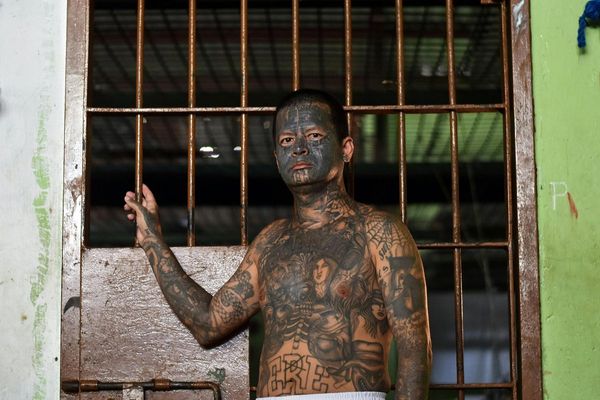
A new investigation has casts doubt on evidence used to imprison six Afghan teenagers over a fire that destroyed much of a refugee camp on the Greek island of Lesbos.
Four were sentenced to 10 years in jail for “arson with risk to endanger life” and two were given five years by a youth court. The fire reduced much of the infamous “hell on earth” Moria refugee camp to ashes in September 2020.
The two boys lost their appeal but the four older teenagers have an appeal hearing due on 6 March.
The fire renewed focus on the camp – where about 12,000 people had been living in a space for under 3,000 – and on the EU’s migration policies.
The Greek prime minister, Kyriakos Mitsotakis, said the destruction – which left thousands without shelter – represented a moment to turn a “problem into an opportunity” for a new camp on the island with greater EU involvement.
The six were arrested days after the fire, with the Greek migration minister tweeting at the time that the “arsonists” had been detained.
The four men were convicted in June 2021 in a trial their defence lawyers said had “major procedural violations”, including erroneous or incomplete translations. Their lawyers complain the conviction was based largely on testimony from one witness who did not attend the trial.

The research units Forensic Architecture and Forensis, commissioned by the defendant’s lawyers to map the spread of the fire that night, have now released their findings from a months-long investigation, drawing on hundreds of videos and photos taken that night by camp residents as well as court files. Their conclusions, presented in a 20-minute video, highlight inconsistencies in the witness’s testimony – crucially that the area he says he saw being set alight by the young men was more likely to have been set ablaze by firebrands carried by wind.
This corroborates the report from the Lesbos fire department, which concluded that the fire in an area called zone 12 – one of a number of zones of the sprawling camp, and where the witness says he saw the teenagers – was spread by flames fanned by the wind.
According to the research, there had been a recurring pattern of fires over the years, including more than 100 in 2020, as the camp’s population swelled, relying often on ad-hoc electricity supplies. Thousands of people were living in highly flammable tent-like structures, with dry ground and hot weather increasing the chance of fires.
Stefanos Levidis, a lead researcher at Forensic Architecture, said the investigation “lays bare the structural failings of the EU’s ever-expanding carceral archipelago in the Aegean, and those of the operational and juridical infrastructure assembled to enforce it”.
Levidis added: “Drawing mainly from evidence produced by asylum seekers recording their itinerant possessions going up in flames, this detailed digital reconstruction of the fire scrapes the ashes of Moria in search of justice, memory and accountability.”

Effie Doussi, a lawyer for the defendants, said they had sought help from Forensic Architecture and Forensis to examine alleged flaws in the convictions.
“It’s very important to show that this was the chronicle of a disaster foretold,” said Doussi, who believes the conviction was “unjustified”.
Vicky Aggelidou from Legal Centre Lesvos, representing the four, said the witness who accused the six had not appeared to defend his testimony.
“From the moment they were arrested, they were assumed guilty by the press and high levels of the Greek government,” she said. “The trial itself was highly politicised, no press or observers were allowed in the courtroom, and it seems the guilty verdict had been determined beforehand.
“I hope that, at the upcoming appeal trial, despite the complete disregard for basic principles of justice at the first trial, the defendants will finally receive a fair trial and that all four will be released.”

Dimitra Andritsou, a coordinator at Forensis, said the fire was not “an isolated incident”. She added: “It was the last of a series of at least 247 outbreaks in and around the camp since its establishment in 2013.
“Our analysis, based on the examination of hundreds of videos and images that night, shows that the young asylum seekers accused of starting the fire were summarily arrested on the basis of weak and contradictory evidence, suggesting that the EU’s and Greek government’s inhumane management of the camp required a scapegoat for a disaster that was designed to happen.”
The Greek migration ministry said in a statement that it did not intervene in the judicial process: “The investigation of incidents like that of the fire in Moria is the responsibility of the Greek prosecuting authorities, while the judicial authorities are responsible for the trial of such cases.
“As far as the first reception facilities at the points of entry are concerned, those in usage until 2019 did not offer adequate safety conditions and an appropriate living environment for the asylum seekers. That’s why Greece, in cooperation with the EU, proceeded to build the Closed Controlled Access Centres which are now operating.”







